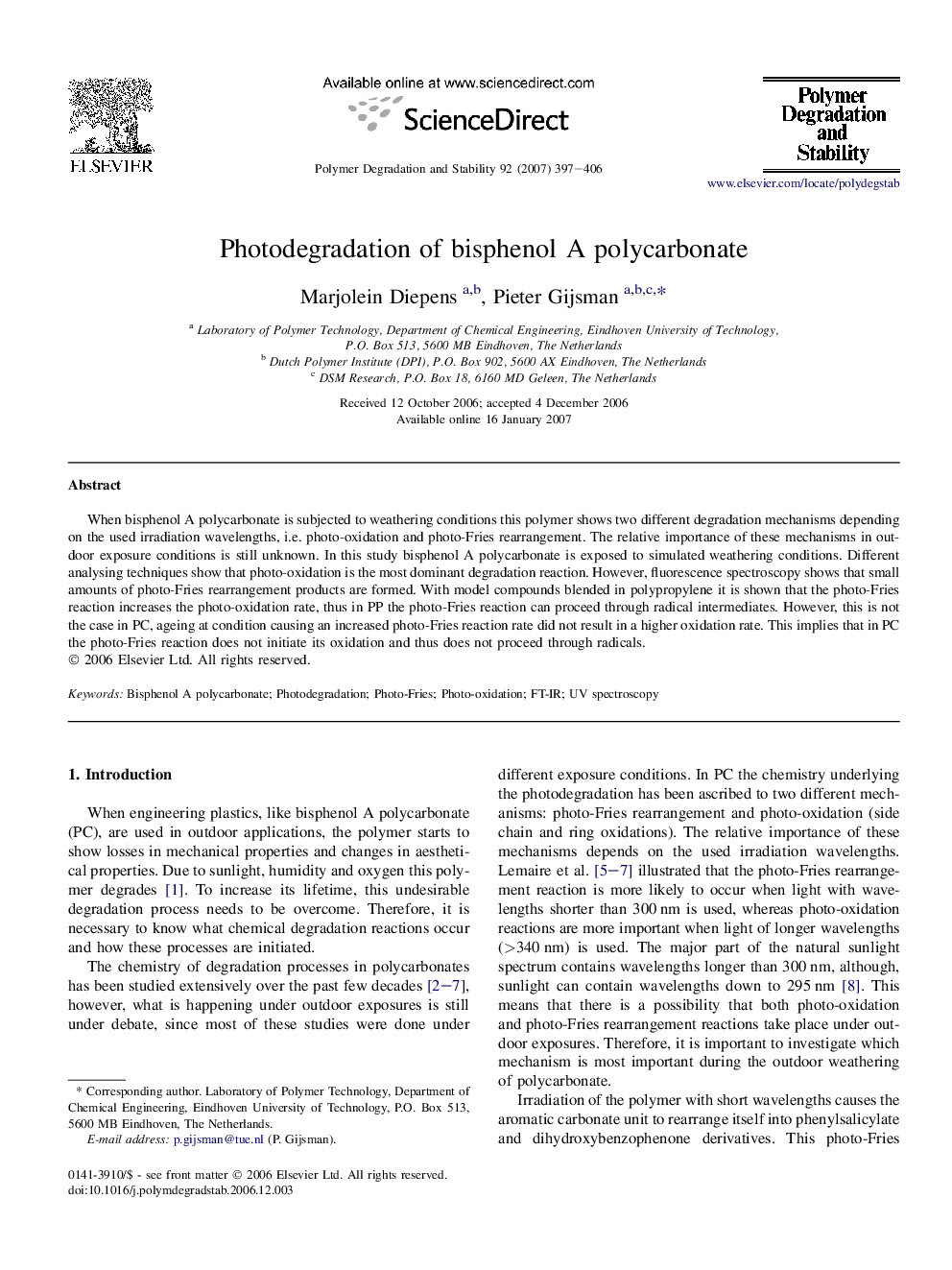| Article ID | Journal | Published Year | Pages | File Type |
|---|---|---|---|---|
| 5204612 | Polymer Degradation and Stability | 2007 | 10 Pages |
Abstract
When bisphenol A polycarbonate is subjected to weathering conditions this polymer shows two different degradation mechanisms depending on the used irradiation wavelengths, i.e. photo-oxidation and photo-Fries rearrangement. The relative importance of these mechanisms in outdoor exposure conditions is still unknown. In this study bisphenol A polycarbonate is exposed to simulated weathering conditions. Different analysing techniques show that photo-oxidation is the most dominant degradation reaction. However, fluorescence spectroscopy shows that small amounts of photo-Fries rearrangement products are formed. With model compounds blended in polypropylene it is shown that the photo-Fries reaction increases the photo-oxidation rate, thus in PP the photo-Fries reaction can proceed through radical intermediates. However, this is not the case in PC, ageing at condition causing an increased photo-Fries reaction rate did not result in a higher oxidation rate. This implies that in PC the photo-Fries reaction does not initiate its oxidation and thus does not proceed through radicals.
Related Topics
Physical Sciences and Engineering
Chemistry
Organic Chemistry
Authors
Marjolein Diepens, Pieter Gijsman,
